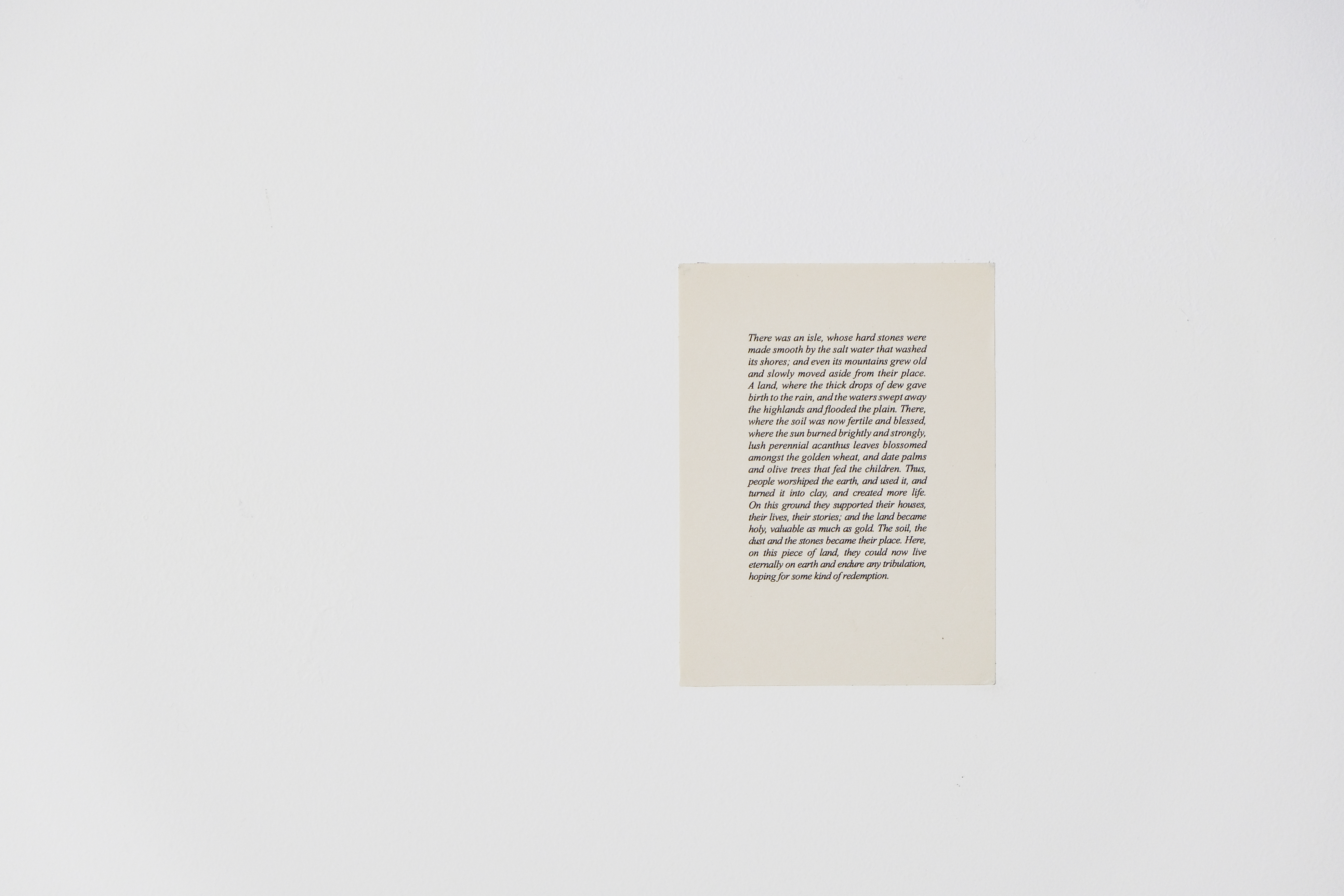









Her Stones Were Sapphire, and Her Soil Was Gold, 2022
found ceramic fragments onto plaster slab, photographs transferred onto plaster slabs, archival pigment prints mounted on plywood, archival pigment prints in walnut frames, metal, plaster and ceramic fragments, inkjet print on paper. dimensions variable
found ceramic fragments onto plaster slab, photographs transferred onto plaster slabs, archival pigment prints mounted on plywood, archival pigment prints in walnut frames, metal, plaster and ceramic fragments, inkjet print on paper. dimensions variable
“There was an isle, whose hard stones
were made smooth by the salt water that washed its shores; and even its
mountains grew old and slowly moved aside from their place. A land, where the
thick drops of dew gave birth to the rain, and the waters swept away the
highlands and flooded the plain. There, where the soil was now fertile and
blessed, where the sun burned brightly and strongly, lush perennial acanthus
leaves blossomed amongst the golden wheat, and date palms and olive trees that
fed the children. Thus, people worshiped the earth, and used it, and turned it into clay,
and created more life. On this ground they supported their houses, their lives,
their stories; and the land became holy, valuable as much as gold. The soil,
the dust and the stones
became their place. Here, on this piece of land, they
could now live eternally on earth and endure any tribulation, hoping for some
kind of redemption.”
The work
departs from a fragmented poetic reappropriation of the Book of Job found in
the Ketuvim section of the Hebrew Bible, and the first of the Poetic Books in
the Old Testament in the Christian Bible, in which we witness the existential
suffering of its righteous eponymous protagonist and a profound discourse on
theodicy. Lambouris’ literary piece lyrically unfolds as an ambiguous and sentimental
description of an undisclosed island. Omitting any reference to Job himself while
pertaining to religious and folklore connotations, the piece refers to the
natural beauty of the island, its fertile land and its effect on the lives of
the indigenous people. Both the text, the images and/or artifacts that make up
the work, operate as visual cues that simultaneously denote or affect each
other as fragments of a larger non-linear narrative which attempts to negotiate
our multifaceted relations, processes and complex negotiations on issues of
land, home, history and religion.